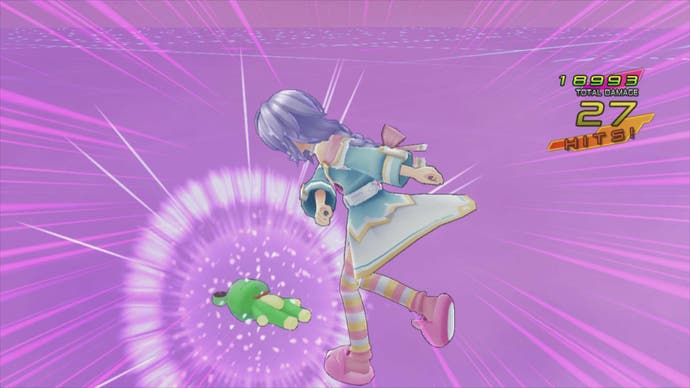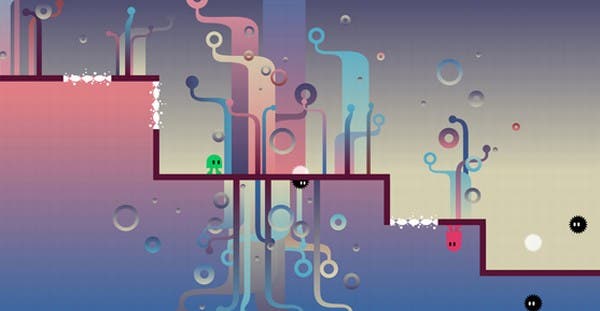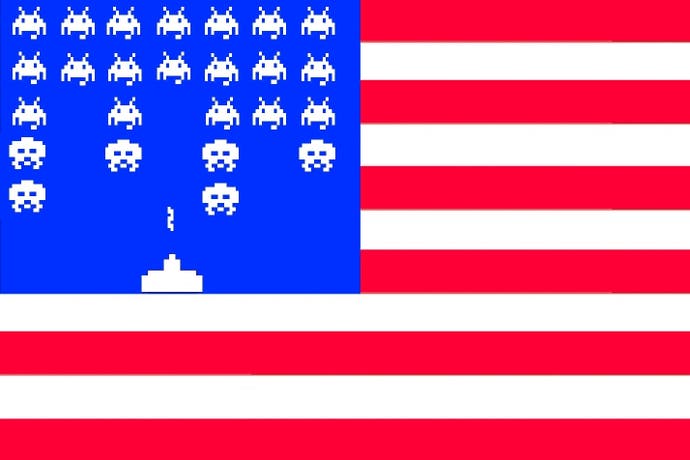Letter from America: Saving the best 'til last
USgamer's favourite features of 2013.
Season's greetings all!
Since this is the last Letter from America of 2013, I thought I'd do something a little different and invite the USgamer team to tell you about the stories they most enjoyed writing this year. Essentially, it's a retro-spectacular, best-of-USgamer-a-thon. So if you're sitting comfortably, let's begin.
Jeremy Parish (Senior Editor): I don't know that I've ever thrown more time, energy, effort, and passion into a single piece of writing knowing full well I'd be lucky if more than a handful of people bothered to read it than with the Umihara Kawase retrospective I put together at Tokyo Game Show this year. Indie Before It Was Cool: The Umihara Kawase Story is a feature I never thought I'd have the opportunity to write; in fact, it only happened because I made a request to interview Umihara Kawase creator Kiyoshi Sakai fully expecting a negative response. When I actually got a "yes", I felt slightly terrified at the prospect of meeting the man behind such a brilliant game. But neither could I turn down the opportunity, even if it meant taking a train ride an hour out from Tokyo in the midst of a busy trade show.

What's the big deal, you may be wondering? Well, I've been slightly obsessed with Umihara Kawase for years. I love (love) the NES version of Bionic Commando, which replaces standard platform jumping mechanics with the ability to grapple and swing about. Umihara Kawase takes that concept and runs with it, eschewing the plot and structure of Bionic Commando and similar games in favor of no-nonsense grapple-platforming. It's a stripped-down, amped-up take on a very specific game mechanic, and it makes use of remarkable physics and level design for the sake of pure challenge. Alas, to date the series has never managed to break out of Japan, so it's the very definition of niche.
But that's exactly why I'm so proud of this piece. It's a story that very few people in the English-speaking world would ever think to pursue, focused around the creator of a game that isn't particularly popular even in Japan. Yet out here in the periphery of the industry is where the most interesting stories often lie. A good interview with Shigeru Miyamoto or Ken Levine is always an entertaining read, but the passions and unconventional perspectives of creators like Sakai speak to the breadth of the medium. Not a whole lot of people will ever want to read about Umihara Kawase (even after Sayonara Umihara Kawase makes its way west next year) - but for the few who do, I'm happy to have created a small window into the true history and philosophy behind the series.
Mike Williams (Staff Writer): This is a hard question for me. I'd normally err on the side of an interview, because that's one of my favorite parts of the job, whether its on USgamer or GamesIndustry International (I write for both). I also did a ton of reviews this year. I only started reviewing games this summer when USgamer launched, but since then I've reviewed Grand Theft Auto 5, Assassin's Creed 4: Black Flag (twice), Call of Duty: Ghosts, Splinter Cell: Blacklist, Beyond: Two Souls, and Saints Row 4 just to name a few.

It was a lot of writing and I was pretty much thrown into the deep end after being a news writer for most of my career. Switching over to USgamer made editorial a big part of my daily life and allowed me to go full-time, so I'll always be grateful for the opportunity. But my favorite piece this year had very little writing on my part.
The image-heavy Next Gen Graphics series was my attempt to show the jump in game graphics from the beginning to the end of a console generation. Over the course of Part 1, Part 2, and Part 3, I collected 242 images in total, stretching from the NES all the way to the Xbox One. I expected it to be easy, but finding great images of each representative game took a long time. In fact, each article probably took around three or four hours to put together, with most of that being hunting for images.
I had a lot of fun doing it though and it showed me some interesting truths. For example, the Super NES, Sega Genesis (Mega Drive to you folks), and N64 launch line-ups were painfully small, compared to some of the later launch line-ups, like the PlayStation 2. All three articles are a pretty quick read, since they're mostly pictures, so you should take a look at all of them. The series will be moving forward in 2014, with comparisons of different series or genres. I expect my first one will be the Final Fantasy series, but if you have any suggestions, leave them in the comments below!
Pete Davison (News Editor): To date, one of our most commented-on pieces on the site - and one of the pieces I found most enjoyable to write - is my study of "The Hidden Depths of Otaku Games", a piece I put together with the help of Brittany Avery from Xseed Games and Ryan Phillips from NIS America shortly after Xseed's announcement that it would be localising the ninja beat-'em-up-cum-visual-novel Senran Kagura Burst. Senran Kagura is a series that Jeremy once, via Twitter, memorably challenged our fellow games journalists to write about without mentioning breasts even once - a challenge that very few managed to successfully complete. As Avery and Phillips both argue, there's a lot more to games like Senran Kagura than just boobs, but few people are willing to look past that aspect.

As someone who enjoys the more colourful, moe side of Japanese games with everything that entails, I felt it was important to me personally to write something about the many common misconceptions with regard to these games - and how they're often a lot deeper and more intelligent than people give them credit for. The Ar Tonelico series, for example, features some fascinatingly in-depth characterisation and exploration of mature themes but is barely known by those not quite as far down the RPG rabbit hole as me, while titles like Time and Eternity are soundly panned despite actually, to a fan of Japanese media in general (and consequently someone who's a little more familiar and comfortable with the tropes it's using), not being all that bad at all.
I'm not sure how many minds I changed - if any! - but the piece certainly led to some fascinating discussion, and a lot of people who also like these types of game but had come to feel somewhat stigmatised or ashamed of their tastes came forward after I published it and thanked me for writing it. It's always a really nice feeling to know that something you've written has connected with someone - even if it perhaps didn't connect with everyone.
Cassandra Khaw (Content Editor): I thought about this for a long while, and while part of me wants to say that my favourite piece involves my investigation of the Grand Theft Auto 5's stock market manipulation, I think the one that I'm happiest to have wrote was this editorial about framing grief through video games. It feels a little weird to say as that period of my life was rather depressing. Finding out that your grandfather is dying, his body teeming with cancerous tumours, and then discovering your uncle had passed on due to a stroke? All within a few days? Not pleasant. Just. Nope.

But I'm glad I wrote it. For an abundance of reasons. First, it was the selfish idea that I'd be able to immortalise my grandfather somehow. At least for a little while, other people knew about him, wondered about him, thought about him. In the grand scheme of things, that probably amounts to very little but I'd like to think I made at least one person keep him in mind. More than that, I kind of hope that it made someone go out and call their grandparents to tell them that they love him because, honestly, human beings are just a little too good at forgetting everyone will die some day.
I got a chance to talk about That Dragon, Cancer again. Which pleases me more than confronting my grandfather's mortality. It's a beautiful game that I keep wanting people to talk about, to discuss, to study. Naysayers may argue we might lack a Citizen Kane to call our own but, you know what? We have games like That Dragon, Cancer. And something that can make you believe, just for a moment, that you're a grief-stricken father, too desperate to do anything but beg his god for peace, as he struggles to bring comfort to his ailing child? That's beautiful. And proof that the medium, even in his youth, is damn well worthy of being respected.
Jaz Rignall (El Jefe): While I've written plenty of articles about big-name games and multi-million-dollar franchises, the ones that mean the most to me are the more personal pieces that tell a story or capture a feeling. Like the simple preview that I started writing in Los Angeles airport, and finished in San Francisco that was inspired by a game that you've likely never even heard of.
It was the beginning of June, and I was on my way home from E3. After days of running around looking at games and meeting people, I was pretty much spent. The show was one of transition, where we saw the last games of the outgoing generation, and the first games of the next. It was exciting, stimulating and overwhelming.
As I was heading out of the show, I'd stopped to play a funny little PS3 indie game that I'd seen as I was running around, but hadn't had time to check out. I'm really glad I did, as it ended up giving me the perspective on gaming I really needed after having a fire hose of hype aimed at my face for days on end.

Another piece I really enjoyed writing was an utterly mundane account of the Xbox One launch, live from the City of the Dead. With all the lavish launch parties and special events making the headlines, I thought I'd talk about why lining up outside a nondescript store in a boring town in the middle of the night was still really exciting to me.
But my favourite piece of the year is a review that's not quite a review. It's called In Which Lavish Praise is Heaped Upon Two Old Game Boy Colour Re-Releases, and it's exactly what it says it is. Playing these two old (but new to me) games was really inspiring, and my "review" became more of an ode to what I love about gaming.
So that's it for this year. Because of the Xmas break, there won't be a Letter from America next week, but normal service will resume in 2014. Until then, have a Happy Holidays, as we like to say out here.
See you next year.
Jaz Rignall is editorial director of USgamer.net, a version of Eurogamer from a land where Boxing Day isn't a thing. Bah.








